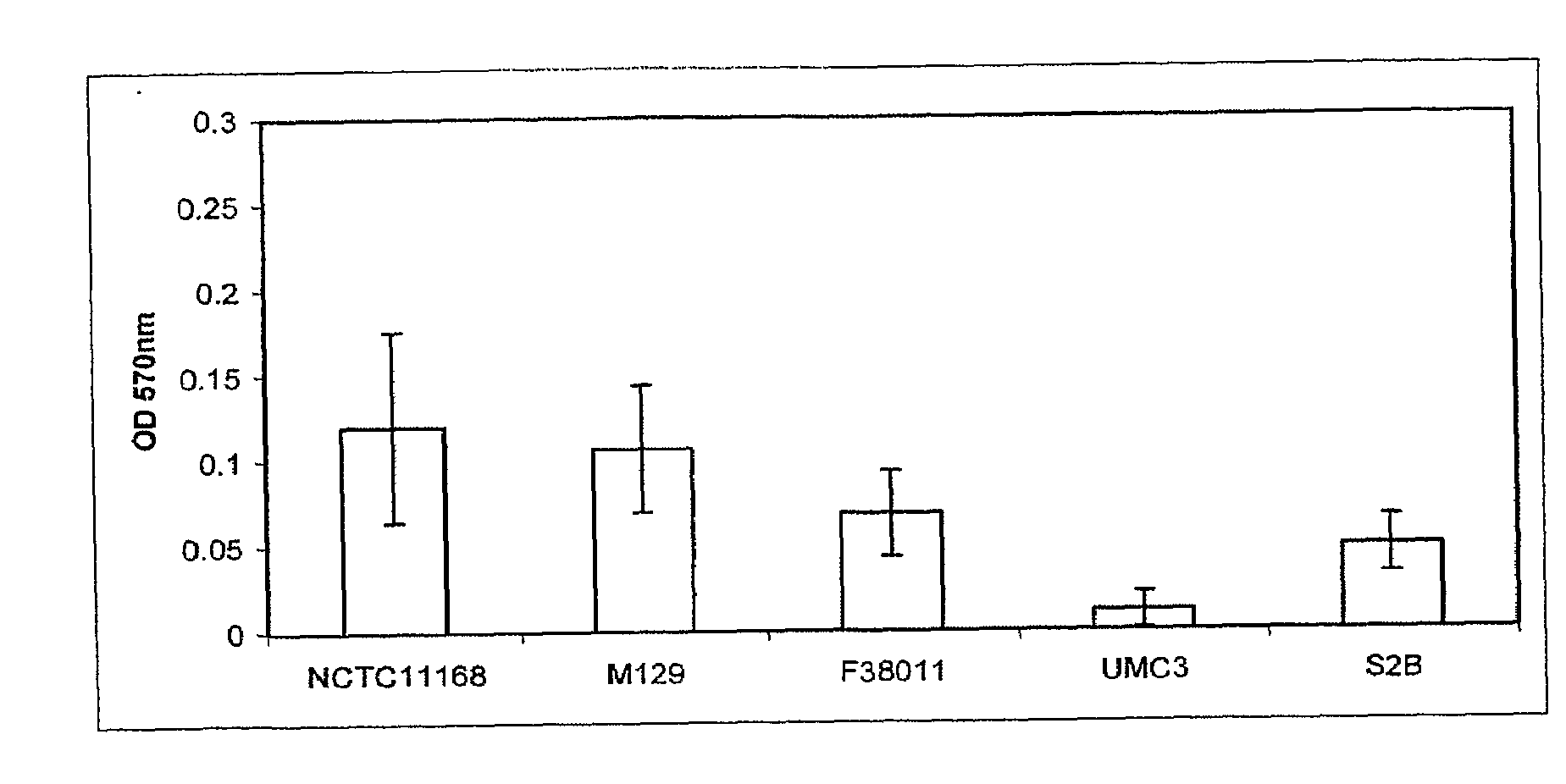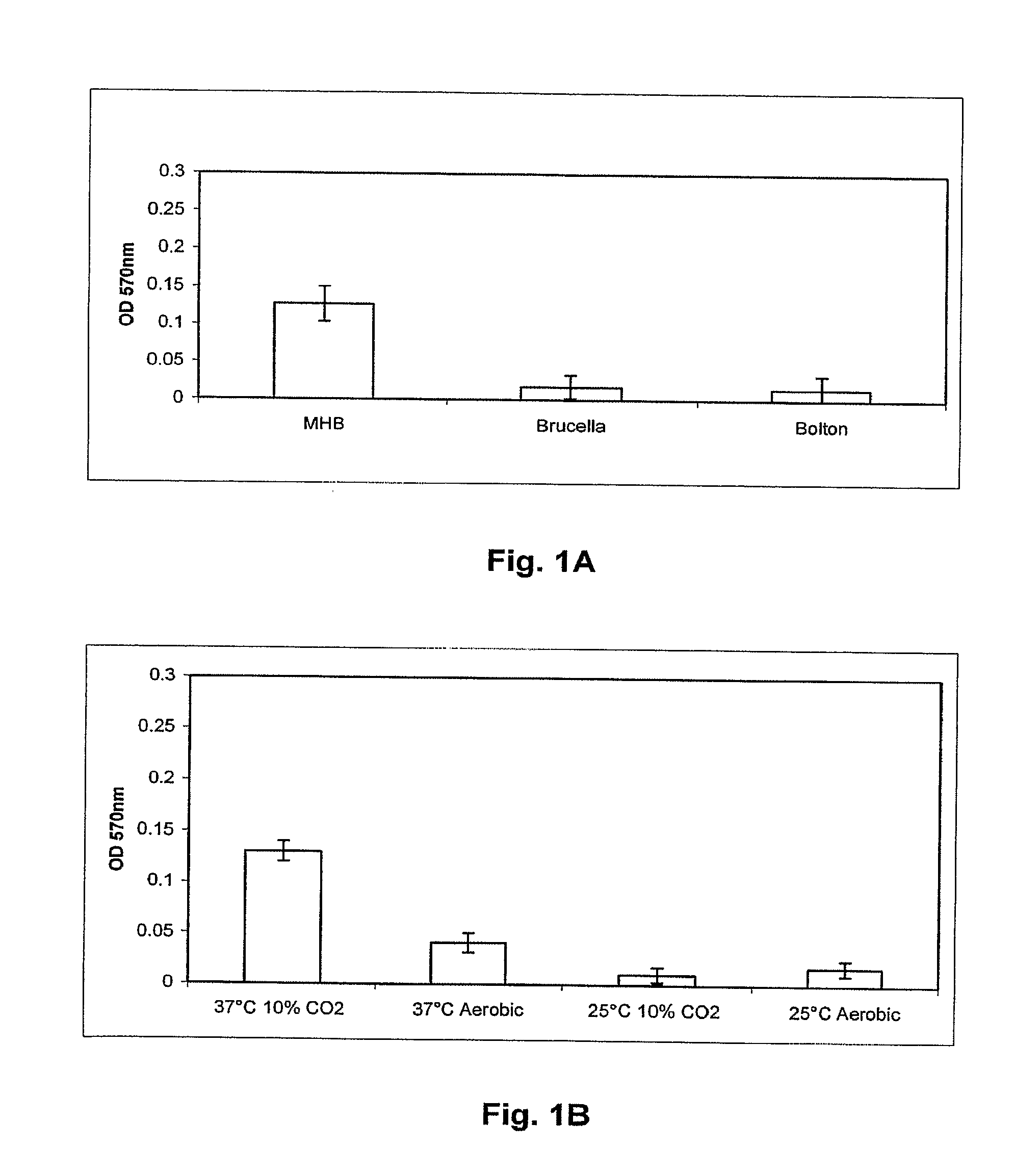Campylobacter Pilus Protein, Compositions and Methods
a technology of campylobacter pilus and compositions, applied in the field of immunogenic compositions, methods, vaccines and genes encoding bacterial virulence determinants, can solve the problems of reducing the incidence of c, becoming a source of infection and contamination, and reducing the incidence of c in the human body, so as to reduce the incidence of c and the effect of reducing the incidence of campylobacter infection and diseas
- Summary
- Abstract
- Description
- Claims
- Application Information
AI Technical Summary
Benefits of technology
Problems solved by technology
Method used
Image
Examples
example 1
Bacterial Strains and Media
[0120]All C. jejuni isolates (Table 1) were maintained on Mueller Hinton agar (Difco) supplemented with 5% bovine blood at 37° C. in a 10% CO2 incubator.
example 2
[0121]C. jejuni isolates to be assayed for biofilm formation were grown overnight in Mueller Hinton broth (MHB) at 37° C. and 10% CO2 with shaking to an OD600 of 0.25. The wells of 24 well polystyrene plates (Corning) containing 1 ml MHB, Brucella A(Difco) or Bolton (Difco) broths were inoculated with overnight cultures of C. jejuni isolates to an OD600=0.025 (˜2.5×107 bacteria). Plates were then incubated at 25 or 37° C. in ambient air 10% CO2 atmosphere for 24, 48 or 72 hr. Following incubation, the medium was removed, the wells were dried for 30 min at 55° C., and 1 ml 0.1% crystal violet (CV) was added for 5 min at room temperature. The unbound CV was removed and the wells were washed twice with H2O. The wells were dried at 55° C. for 15 min, and bound CV was decolorized with 80% ethanol:20% acetone. 100 μl aliquots of this solution were removed from the wells, placed into a 96 well plate, and the OD570 was determined using a micro plate reader (Bio-tek) t...
example 3
C. jejuni Biofilm Formation on Abiotic Surfaces
[0123]Sterile, ˜1×4 cm coupons of acrylonitrile butadiene styrene plastic (ABS), polyvinyl chloride plastic (PVC), polystyrene or copper were placed in 15 ml polypropylene tubes with 5 ml MHB such that the coupons were completely submerged. The tubes were inoculated with C. jejuni to an OD600=0.025 and incubated for 24 hr at 37° C. in a 10% CO2 atmosphere. The coupons were aseptically removed, placed into sterile 15 ml tubes with 2 ml of 0.1M phosphate buffered saline pH 7.3 (PBS) and 20 sterile 4 mm glass beads, and the tubes were vortexed to remove bacterial cells on full speed for 1 min. Viable bacteria were enumerated by dilution plating on Mueller-Hinton agar supplemented with 5% blood.
PUM
| Property | Measurement | Unit |
|---|---|---|
| time | aaaaa | aaaaa |
| time | aaaaa | aaaaa |
| time | aaaaa | aaaaa |
Abstract
Description
Claims
Application Information
 Login to View More
Login to View More - R&D
- Intellectual Property
- Life Sciences
- Materials
- Tech Scout
- Unparalleled Data Quality
- Higher Quality Content
- 60% Fewer Hallucinations
Browse by: Latest US Patents, China's latest patents, Technical Efficacy Thesaurus, Application Domain, Technology Topic, Popular Technical Reports.
© 2025 PatSnap. All rights reserved.Legal|Privacy policy|Modern Slavery Act Transparency Statement|Sitemap|About US| Contact US: help@patsnap.com



